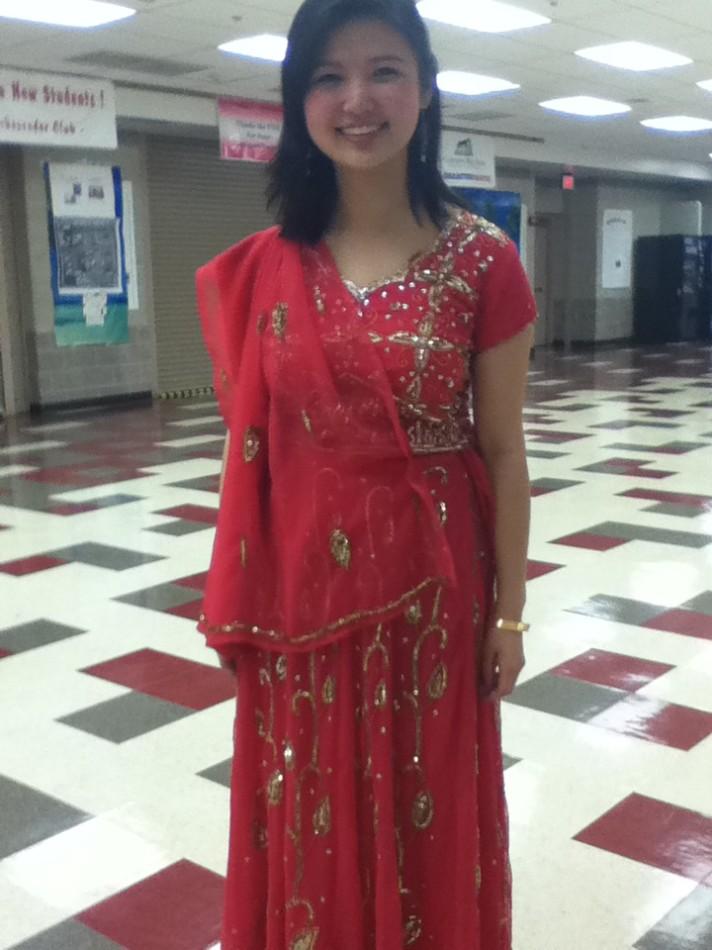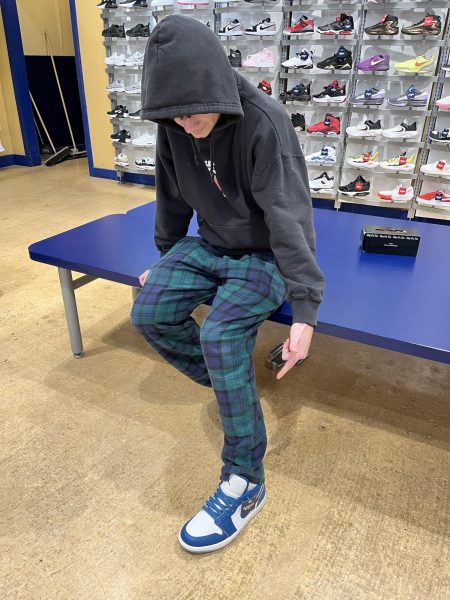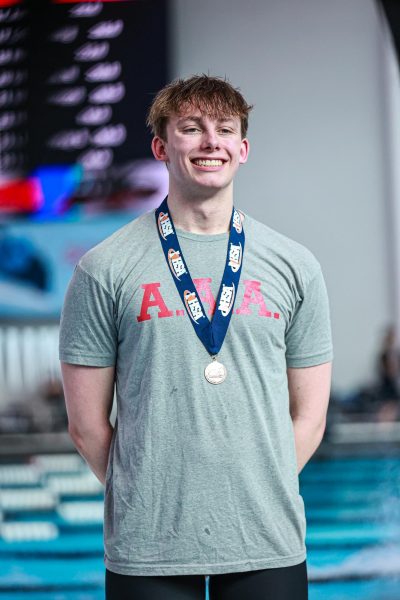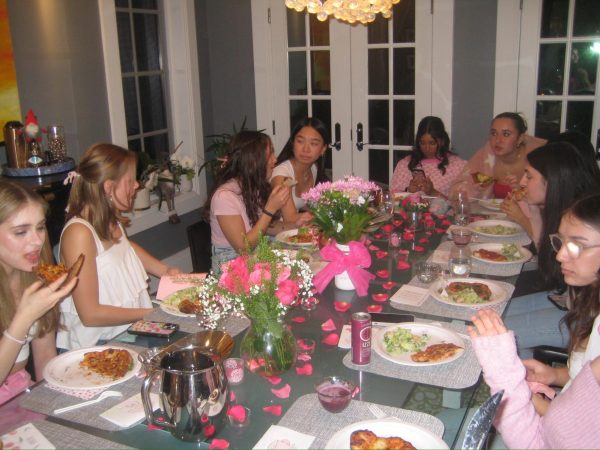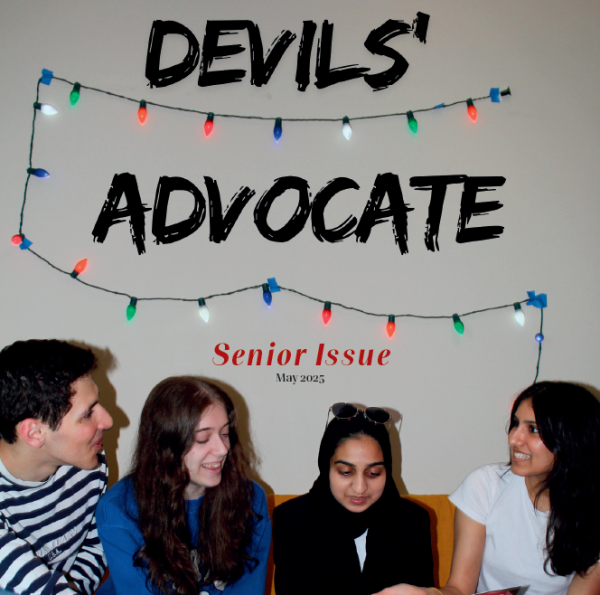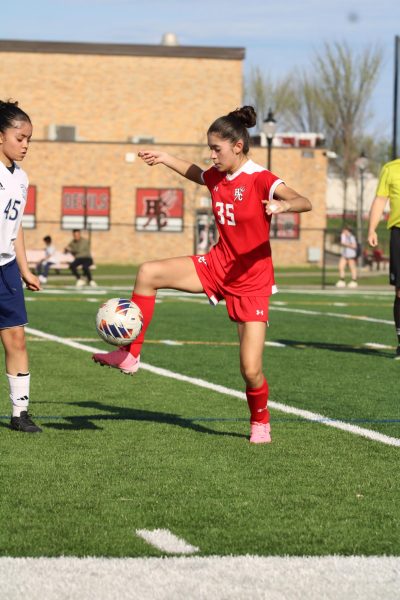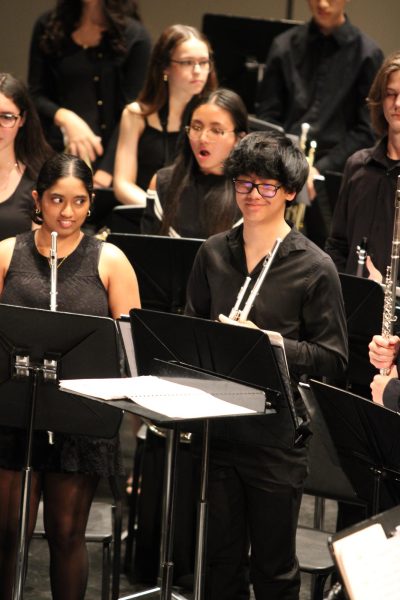The girl in the pink lengha
As the music begins to spread through the gymnasium to signal the start of the Indian dance at Thursday’s Ethnic Fair, a group of girls make their entrance wearing colorful and ornamented lengha, which are traditional Indian clothing made of long pieces of cloth draped over a petticoat and blouse. Soon the boys follow suit in their similarly vibrant garments. Amidst the large group of mostly darker skinned students is a girl whose short dark hair and light skin stand out nicely against her bright pink lengha which is embellished with gold accents.
The girl in the pink lengha is senior Jing Gao, who is of Asian descent. Jing Gao participated in this year’s Indian dance as one the handful of non-Indians in the group. Having known about the dance from past years as it has become a staple at Central’s annual Ethnic Fair, she developed an interest in it and was able to join the group for the first time this year. Additionally, Gao knew a number of friends and acquaintances that had participated in the dance in previous years.
“I heard about it a few years ago, and I thought it sounded really interesting. I don’t exactly remember how, but it might have been because I knew that senior twins Sonya and Sandra Mathew were a part of it or that there were people in some of my classes doing it,” Gao said.
Gao came into the dance group with no Indian dance background and little general dance background for the matter, but nevertheless found the group very welcoming and picked up the dance fairly easily.
“Everyone else regardless of race has been really open and welcoming to me, so I don’t feel that I’m out of place. I also get to do it with a bunch of my friends, so that’s a definite benefit as well,” Gao said.
Senior Palak Chauhan, who is of Indian descent and helped choreograph the ethnic fair dances, agrees that understanding the style of dance isn’t too difficult, especially with the help of some visual aids.
“It’s not too bad, but often times I would have to tell people to go watch a bunch of YouTube videos of people dancing so they can get the true feel of what Bollywood is like, but I think it’s fun seeing someone who isn’t Indian interested in this,” Chauhan said.
To learn and perfect routines, the group practiced on Sunday afternoons for the past few months, which Gao found a very manageable amount of time to commit to compared to many other extracurricular activities.
“I think it’s really manageable. It worked out so that we practiced on Sunday afternoons, a time that happens to be really convenient for me, so I never thought that the schedule was overbearing,” Gao said.
The group also performed at a handful of other functions, such as a Holi celebration at Lemont Temple, to get in more practice time. Although much of the dancing style was new to Gao, she felt extremely motivated to learn the routines well.
“I think that being one of the non-Indians in it made me want to prove that I could remember all the steps too, so it made me practice harder,” Gao said.
Being a part of the dance group has been a unique experience for Gao and has not only introduced her to a new culture, but also a new form of artistic expression. More importantly, it has opened her up to more new experiences like these in the future.
“I think it’s been a really fun experience, and I want to do more things along these lines just because I’ve had such a good time. It’s definitely a new style, although I’m new to dancing too, but it’s something I’ve really grown to enjoy,” Gao said.
While dancing is a longstanding Indian tradition, many of the songs the group did for Ethnic Fair were quite varied and reflected a more modern, Bollywood style.
“We do a lot of songs for the program, so the style of dancing varies based on the song too. I know that we dabble in everything from classical to hip-hop, so basically it’s just like routines you’d imagine in a Bollywood film. The routines vary based on the genre of film too,” Gao said.
Bollywood dance has gained popularity not only because of its contemporary nature, but also because of the added theatricality that comes with the style.
“We put a lot of focus on Bollywood dancing too, which is just essentially Indian dancing a long with a little bit of acting through facial expressions and fun movements,” Chauhan said.
Nevertheless, the group still performed more traditional dances from the variety of areas in India.
“The Indian dance we’re doing for ethnic fair composes of many dances from many of the different parts of India,” Chauhan said.
Overall, Gao feels that she has gotten a lot out of the experience and has not only learned a lot about Indian culture but has also gotten in better shape.
“It’s a good way to exercise and understand modern Indian culture from this viewpoint, which isn’t something that many people here are familiar with,” Gao said.
The trend of students such as Gao participating in the Indian Dance at Ethnic Fair is nothing new, however, and could be a growing trend according to Chauhan.
“We’ve had people that weren’t Indian all the four years I’ve been a part of ethnic fair. This year, we had a large amount of non-Indians in the dance, but everyone feels welcome and we’re all a big family,” Chauhan said.
This trend will likely continue in future years. Although most of the non-Indian dancers in this year’s ethnic fair were graduating seniors, there was one younger non-Indian student who participated in the dance. Sophomore Onpailin Rang participated in the dance for similar reasons to Gao and her positive experience has lead her to decide to do the dance in the future.
“At first I didn’t want to, but my friend got me into it and a part of me wanted to try something new. The experience turned out to be really fun. I looked forward to practices and got to learn so much more about Indian culture. It’s definitely a high school memory I’ll treasure and do again next year if I get the chance to,” Rang said.




